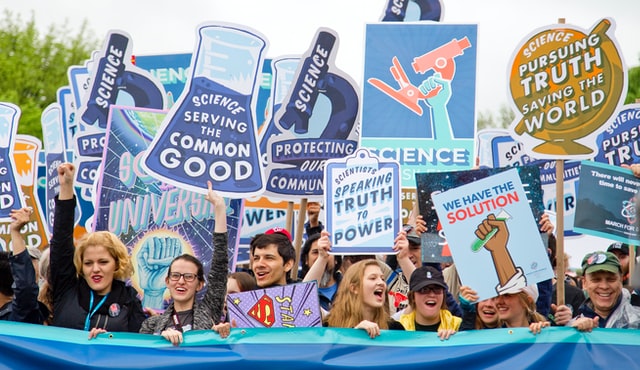The March for Science will be held in Washington, D.C. and more than 500 communities around the world on April 22, 2017. This coincides with Earth Day and it’s hard to believe that in the 21st Century there is even a need to demonstrate support for something so fundamental as the planet we live on and the very foundation of principles which have enabled us to thrive.
“Science should neither serve special interests nor be rejected based on personal convictions,” as stated on the organization’s website. “At its core, science is a tool for seeking answers. It can and should influence policy and guide our long-term decision-making.”
With the recent downfall of Fox News’ Bill O’Reilly due to the disclosure of a series of sexual harassment allegations against him, perhaps some of his viewers may be more skeptical of the moral superiority of popular talking heads such as him. Maybe they will rethink whether tuning in to hear one person’s opinions will lead them to the truth better than research-based proven scientific facts. As much as we may want easy answers to complex issues, they won’t come from any one pundit, commentator or so-called analyst.
We live at a time when we celebrate science fiction more than science. Although Neil deGrasse Tyson’s Cosmos series is making inroads, it’s the fictional Star Wars, The Avengers and The Hunger Games where people spend their hard earned money and precious leisure time. As a nation we honor the achievements of athletes, musicians and actors far more than we do those of scientists, mathematicians and physicists. And they are paid a lot more as a result.
The fact is we over value entertainment and under value education. No wonder so many children when asked what they want to be when they grow up no longer say a doctor or fireman, they say they want to be rich and they want to be famous.
Actor Jim Carrey once said: “I think everybody should get rich and famous, and do everything they ever dreamed of so they can see that it’s not the answer.”
In the workplace we see the effects of this focus on shortcuts and quick fixes in the form of growth at the expense of actual value. According to a 2013 McKinsey survey, more than half of corporate executives said they would pass on a viable project “if it would cause the company to even marginally miss its quarterly earnings target.” These leaders are so afraid of shareholders that they dismiss what they believe to be in the best long-term interests of the company’s profitability because they are measured simply quarter to quarter.
This is crazy, of course, and it is not sustainable. Douglas Rushkoff, author of Throwing Rocks at the Google Bus, says this is a tornado of technological improvements that has spun our economic model out of control and humanity as a whole is trapped by the consequences.
As an example, Rushkoff writes about robotic ad-viewing programs or bots that are now used by some unscrupulous companies to raise their pay-per-click advertising revenue. These bots are often run secretly on our computers in the form of malware and, as a result, advertisers were projected to lose $6.3 billion in pay-per-click fees to imaginary viewers in 2015.
The irony is that these malware robots watch ads that are monitored by automated tracking software tailoring every advertising message to suit the malbots’ automated habits inside this personalization of a feedback loop. No human eyeballs may ever see or respond to the ads. No value is created and yet billions of dollars are made.
While many corporations are focused on short-term growth and profitability at the expense of long-term and sustained value, their employees are contributing to this as well.
Employees contribute to this, when they seek to:
- Accomplish individual objectives though they may be in conflict with the collective goals of the workgroup or company.
- Look busy multitasking rather than move important things forward by taking on the challenges of critical thinking.
- Efficiently empty our email inbox rather than doing what’s more important yet may not yield tangible results as quickly.
- Ask for promotions based on how we match up to our colleagues rather than on our own competence and capability.
- Simply follow along and remain “under the radar” rather than push back and risk retribution when we know better.
- Respond to constant disruptions with the dopamine hit of “likes” on social media instead of staying focused on the laborious job-related task in front of us.
The workplace should be one where all workers seek to provide sustainable value. CEOs and employees should all be motivated and compensated for delivering products and services that meet or exceed customer expectations. Rather than focus on short-term profitability, the goal should be long-term value. In this scenario, shareholders will continue to receive their return on investment, yet over a longer period of time. Think Berkshire Hathaway rather than Facebook.
Our current economic model for publicly traded companies that demands quarterly profits at the expense of longer term viability may no longer be relevant. Instead, we need to focus on doing what’s right rather than what’s expedient.
And we cannot rely on pundits in the political or financial realms to provide us with quick and easy answers. Instead, we should seek the continually evolving, research-based, peer-reviewed nature of scientific experimentation to understand how to improve our workplace and our economy. March for science. March for truth. March for workplace health and viability.

























